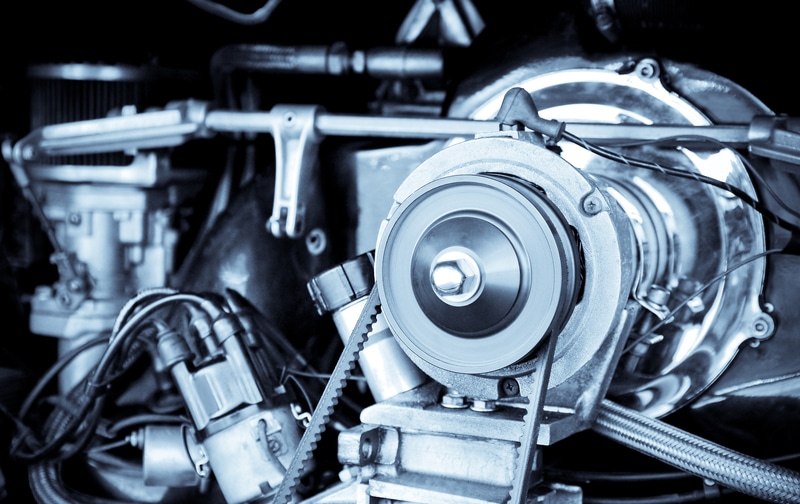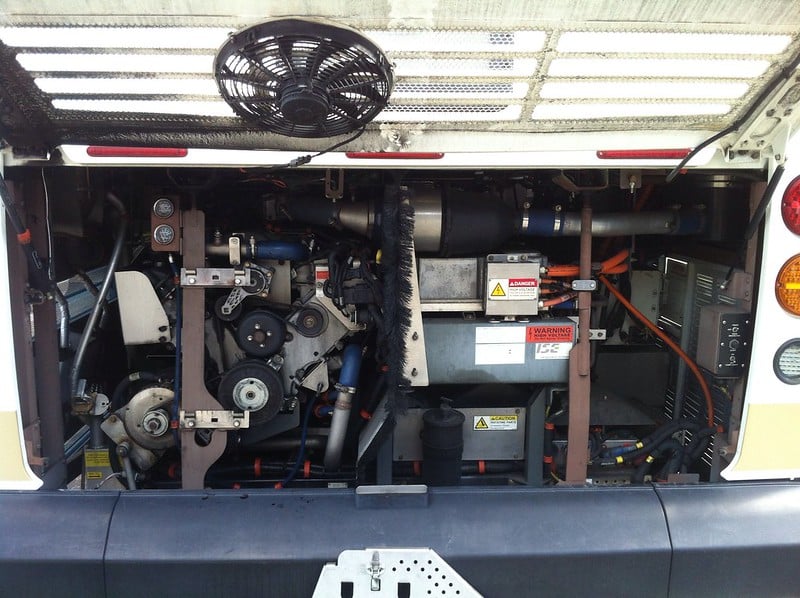
Have you finally decided to get a campervan or trailer to crank up your travels? That’s great news! But not so fast. Are you ready to be a geeky gearhead who talks about nothing but torques and cylinders and transmissions and motors?
Because that’s going to be you very soon unless you prefer to be a non-savvy owner who leaves all the technical mumbo-jumbo to a mechanic.
The truth is, issues with your recreational vehicle do not discriminate against owners based on their technical know-how. You will eventually encounter hiccups whether or not you can fix them. And no one will be there to help you if you can’t, so you must learn to do it yourself.
Not only is knowing a thing or two about your rig’s mechanism can help you stay on top of every mechanical failure, but it will also save you a lot of money on professional repairs.
One of the first things you should get to know before and after purchasing your RV is the engine—the heart of your rig. Without it or with a jerry-built engine, you won’t be able to go very far, and you’ll spend a fortune on repairs and upgrades in the long run
Also, depending on your RV’s engine, your journeys might be plagued with regular stopovers at the workshop.
If you know little about engines, particularly for heavy vehicles like RVs, have a technician or someone knowledgeable about engines come with you to the dealership to examine the unit you’re interested in.
It pays to know what you’re getting, understand why the prices of almost similar models differ, etc. Most of the time, price differences are defined by things you don’t immediately see, like the engine.
Discussing Ford V10 RV Performance Upgrades
Countless engine models have been introduced in the market since the 90s, and one that has stood the test of time is the Ford V10. Ford makes reliable and robust automobiles, and its engines are top of the range.
Moreover, this automaker is at the frontier of building supercars, which we anticipate will dominate the roads soon.
Before the 6.8L V10, there was the 7.5L V8. Its predecessor was powerful, but it needed to provide more torque to meet the stern demand of commercial trucking.
So what Ford engineers did was graft additional cylinders onto the modular 5.4L V8 to allow it to burn more fuel and generate more torque.
Initially, it was good for 425 lb-ft of torque, but after a few more upgrades during the early 2000s, it reached 460 lb-ft of torque. That’s how it became a staple in the heavy vehicle arena.
Despite the long history, many of the more current trucks, buses, pickups, and vans are powered by the Ford V10, and for good reasons:
- No spark plug wires. Instead, this engine has coil-on-plug (COP) ignition, which is more energy-efficient and longer-lasting. Also, voltage can flow more freely since the ignition coils are atop the spark plug.
- Most spark plugs only last about 30,000 miles. After that, it must be checked, cleaned, or replaced. A V10’s spark plug can last up to 90,000 miles.
- It has a fail-safe coolant system, which locks the valve to allow coolant to circulate freely when a component failure causes the engine to overheat.
- It consists of low-friction components, reducing heat and energy loss, protecting the engine from wear and tear, and extending the life of the motor oil.
- It uses a cam chain, which is stronger, more resilient, and quieter than a timing belt. It is also maintenance-free, eliminating the need for a replacement.
- It has an electronic throttle control that makes changing gears easier and helps deal with dramatic torque changes that can damage both the engine and the transmission system.
Even with these fantastic features, it’s not quite what you would imagine when you’re actually on the road driving a Ford-V10-powered RV.
In fact, many motorists claim they were initially disappointed with their engine’s performance and looking for more action. But for seasoned heavy vehicle drivers with significant experience with V10, it’s normal.
It turns out that, like most engines, the Ford V10 needs a bit of optimization to bring out its true potential. There are a bunch of things you can do involving a few tune-ups and upgrades to improve your engine’s performance.
But be ready to fork out cold, hard cash and get your hands dirty because this can be expensive and take work. We’ll focus on the three most effective methods.
1. Fine-tune your rig with 5-Star Tuning Module
One of the likely reasons your RV isn’t performing at optimal levels is that its system configuration is all over the place. It’s not your fault, though, because the information you see on the gauge set in front of you is limited.
You need more to know how much revving up or throttle application the engine needs and other performance-related information.
Consider using a 5-star tuner. It’s a device that allows you to reconfigure your RV’s electronics digitally. Unlike the typical gauges on your dashboard, which provide vague information, this device can show actual numbers and percentages.
It also shows you information about your engine and vehicle not shown on the dashboard, such as transmission shift points and tachometer readings.
To program your RV using this module, you must install it first. It has to be connected to the RV’s control system.
Then, you must enter specific information about the vehicle to ensure you’ll apply the correct tune. The device is easy to operate, and programming the vehicle can be done with a push of a button.
You can program the device to show specific data, including the vehicle load, coolant temperature, speed, and RPM. Knowing these details enables you to avoid actions that lead to misfires, overheating, and other engine problems.
2. Change out your gear
It takes more than revving up the engine to generate power. You also need the right gears to produce the necessary RPM at an average speed.
Many RVs come with tall gears at the rear axle, producing enough RPM to power the engine within the 70- and 80-mph range. The problem is that it’s too fast even for an RV at dry weight.
The safe speed for an RV on an interstate highway is only around 60 mph. Go faster, and you could get into trouble and have a run-in with the police. But you must speed up to get the engine revved up.
So, the solution to this problem is to replace the rear gears with a smaller one, so you can generate more than enough RPM to turbocharge the engine.
This can be very expensive, so before buying a camper van or motorhome, carefully check the gear size and the engine. There’s a sweet zone where both components can work together to get the engine to perform at optimal levels.
You can save money on installation by learning to do it yourself. But it takes experience to get it right since it will involve taking apart a decent portion of the RV’s underbelly.
However, this might affect your speedometer, as the new gear set will increase the wheels’ revolution. You can reconfigure the system through the tuning module, but you must contact the manufacturer to request the correct tune.
3. Replace the air filter more frequently
Your RV’s engine needs enough oxygen to burn fuel down into energy. Some engines consume more air than others.
For example, the Ford V10 takes in around three times more air than the average engine. This means the air filter also gets three times the amount of debris a standard car’s air filter collects.
The general rule is to change out the filter every 5,000 miles. Most filters can last up to 2,000 miles. You can clean it thoroughly after 2000 miles, but when it reaches 5000, it needs to go.
A new filter can improve the engine’s performance by letting as much oxygen in as possible.
Conclusion
The Ford V10 is no doubt a masterpiece. Many claim it is well on its way to powering up the next generation of supercars, and it’s easy to understand why. But, of course, it will require a series of updates to break the barrier that keeps it within the truck and RV range.
New and more powerful Ford engines will be introduced soon. However, before those beasts trick you into replacing your current engine, make sure you learn how to improve its performance first. It will be a waste to replace an engine as powerful as the V10 without maximizing its power.
Investing in a tuner and new gear is worthwhile. You’ve already come so far when you purchased the RV. It wouldn’t hurt to spend more on engine upgrades. If it will power up your rig and increase the useful life of your engine, then it’s a good call.



